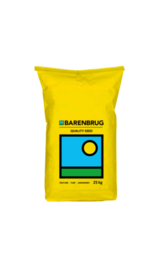Growing Bareno
Bareno pasture brome is a standout persistent pasture for summer dry freedraining soils. In these situations, it is more persistent than perennial ryegrass, is palatable, high yielding and legume friendly. Bareno can be rotationally grazed or set stocked with better late spring quality and summer growth. Bareno is slower to establish than ryegrass. If you spend a little extra time on correct sowing and early management, you’ll be rewarded with good dry matter results. Cultivation ensures a fine, well compacted,
weed-free seedbed to allow correct seed depth and soil moisture retention for fast germination. Direct drilling has proven to be very successful.
Bareno is best sown when soil temperatures are above 12°C, during late summer or early autumn. This gives plants time to adequately establish before winter. Its establishment is much slower in cool conditions.
Sow seedshallow, at 10 - 20 mm. Bareno should not be overgrazed in its first year to allow plants to fully establish. Bareno can set seed quickly so growth needs to be kept under control in late spring. Post grazing covers of 3-4 cm will ensure persistence and regrowth through summer. Remember the plant’s reserves in grasses are above the ground (not in the roots).


.jpg?height=370&width=880&mode=crop&converttowebp=0)
